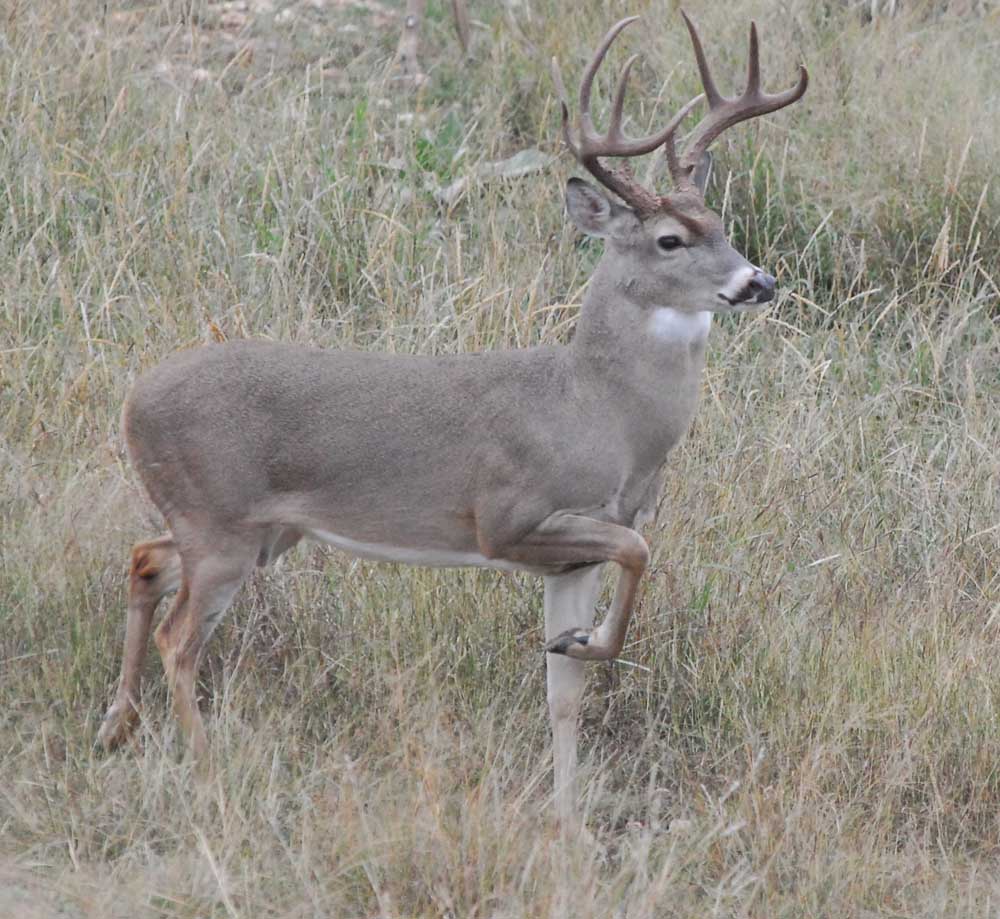Heat Is On: Bowhunters first to experience drought’s impact on antler quality
Published 2:19 pm Friday, September 16, 2022

- Deer hunters across Texas can expect to see a decline in antler quality and possibly fewer deer after a hot, dry summer across the state.
If there ever was a year to utilize “rain in a sack” for white-tailed deer in Texas, this was it.
Protein is key in the spring and summer not only to antler quality, but also doe recovery after fawning and fawn development. While range conditions were not bad coming out of winter into spring, the summer in most of the state was brutal. That does not bode well to the upcoming season that opens for bow hunters and Managed Lands Deer permits Oct. 1.
“Obviously, drought has significant influences on the quality of nutrition deer are receiving from the native vegetation and that in turn can result in less than desirable antlers and lower body weights going into the fall,” explained Alan Cain, Texas Parks and Wildlife Department’s white-tailed deer program leader. “As of early summer, the Texas deer population was facing some tough conditions throughout much of the Lone Star State, and hunter expectations may be tempered a little for the 2022-23 hunting season.”
In June, 90% of the state was in drought conditions ranging from moderate to severe. That began to turn around in late August, but by then it was too late for antler development, but could have been helpful for the late summer stress period.
Fawn survival could also have been impacted by the weather and while that will not impact this year’s hunting, it could down the road with less bucks in the population. However, because of Texas’ deer population, most hunters may never notice.
“Texas supports a robust white-tailed deer herd with the latest statewide population estimate of 5.4 million deer in 2021, essentially unchanged from 2020. Unfortunately, the statewide population estimate for fall of 2022 is likely to be lower than previous estimates, with expectations of below average fawn recruitment this year,” Cain explained.
He added the statewide five-year average for fawn recruitment is approximately 38%, but could dip below 30% this year.
Last season’s statewide harvest was about 830,000, down some from the previous year. Depending on how dependent deer are on feeders this fall, it could fall again.
Because of the size and geographical differences in the state, it is hard to make general predictions statewide. For example, the northern portion of the Post Oak Savannah region had relatively good conditions in the spring. In a region that includes the western edge of Smith County, along with Henderson, Anderson, Van Zandt counties and more, it could mean an average fawn crop and potentially average antler quality.
Because of antler restrictions, 66% of the bucks taken in the Post Oak region last season were 3 ½ years old or over. Put in perspective with what has become a misconception of a quality deer, the average score for a 3 ½-year-old over the last 17 years has been 112 3/8 inches in the Post Oak region. For a 4 ½ it is 121 1/8.
Although the Pineywoods region of eastern Texas has an estimated deer population of more than 300,000, management is a lot more critical in the region because fawn recruitment is often well below the statewide average.
Much of the Pineywoods was dry throughout the summer, but because of decent fawn crops in the past there should be more 4 ½- and 5 ½-year-old bucks in the population. Last year, 51% of the buck harvest was 3 ½ or older, and Cain expects it to remain the same this year with antler restrictions.
In the Pineywoods over the last 17 years, a 3 ½-year-old buck has averaged 112 4/8 inches and a 4 ½ averages 123 7/8.
With nearly 2 million deer, the Edward’s Plateau has by far the largest deer population in the state.
“Within the Hill Country region, hunters should expect to see fewer bucks in the 4 ½-and 5 ½-year-old age class because of poor fawn recruitment in 2017 and 2018. Hunters will likely notice a larger group of young to middle-aged bucks relative to other age classes and may consider passing up some of those bucks and taking a doe instead,” Cain said.
While range conditions in the Hill Country were rough this summer, deer numbers in the western portion of the region were hurt even more by an anthrax outbreak in 2019 that dropped the population by more than 50%.
Truth is come opening day, hunters are not going to care what the summer was like. Their eyes will be more on what the fall could bring.


